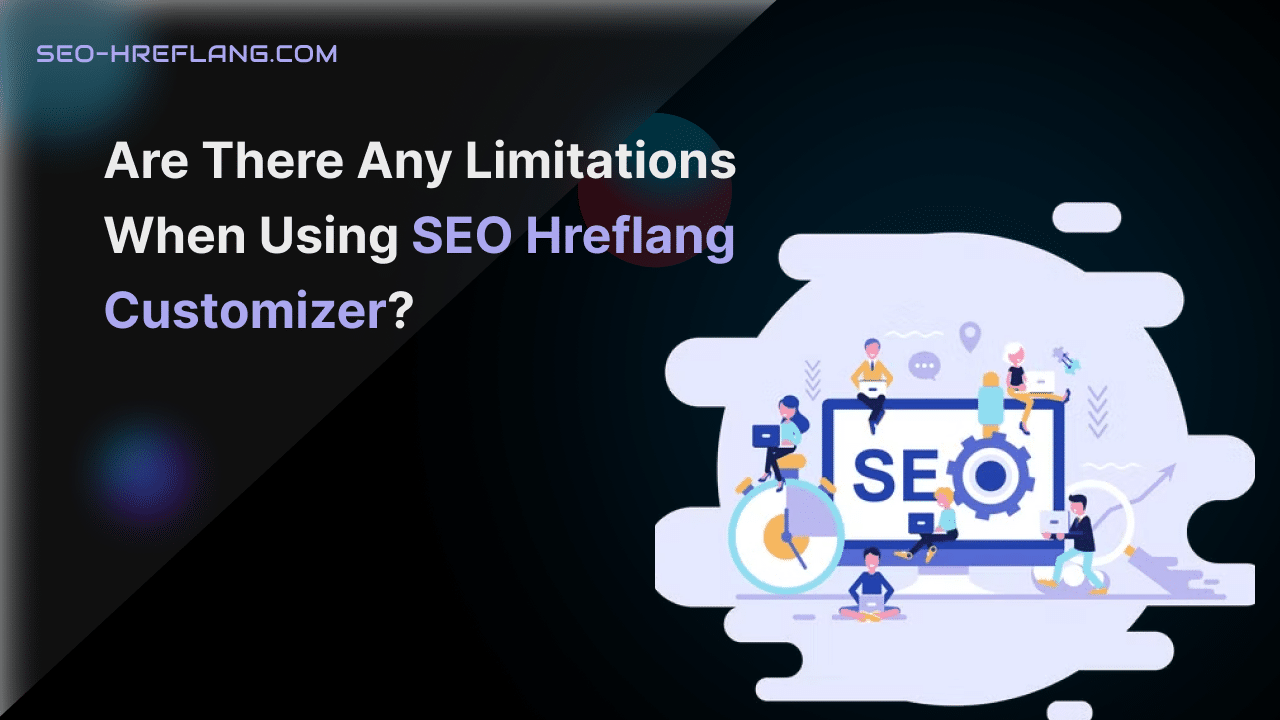While SEO Hreflang Customizer is a valuable tool for managing hreflang tags and improving international SEO performance, there are certain limitations and potential pitfalls to be aware of. Understanding these challenges will help you make informed decisions when implementing SEO Hreflang Customizer on your website.
Here are some important considerations:
▪️ Complexity and Technical Implementation:
Implementing SEO Hreflang Customizer requires technical expertise, as it involves modifying code and ensuring proper integration with your content management system (CMS). Incorrect implementation or incomplete understanding of the tool’s functionality can lead to errors and negatively impact your website’s SEO.
▪️ Accuracy of Language and Country Identification:
SEO Hreflang Customizer relies on accurate identification of languages and countries to serve the appropriate content to users. However, accurately detecting user language preferences or geographic locations can be challenging. The tool may not always accurately identify the user’s language or country, leading to incorrect hreflang tags being applied.
▪️ Dynamic and User-Generated Content:
Websites that heavily rely on dynamic content or user-generated content (UGC) may face challenges when using SEO Hreflang Customizer. The tool may not be able to accurately handle dynamically generated pages or UGC, potentially resulting in incorrect or inconsistent hreflang tags.
▪️ Manual Configuration and Maintenance:
SEO Hreflang Customizer typically requires manual configuration and ongoing maintenance. This means that as your website evolves, new pages are added, or existing pages are modified, you need to ensure that the hreflang tags are updated accordingly. Failure to maintain and update the hreflang tags can lead to inconsistencies and errors in serving the correct content to users.
▪️ Content Parity and Localization:
SEO Hreflang Customizer assumes content parity across different language or country versions of a website. This means that each page in different language or country versions should contain similar content. However, if the content is not truly equivalent or localized appropriately, it may lead to confusion for search engines and users.
▪️ Search Engine Crawling and Indexing Challenges:
Search engines may not always crawl and index hreflang tags correctly, leading to potential issues in displaying the right version of the content to users. While major search engines generally support hreflang annotations, there can be instances where they misinterpret or ignore the tags, resulting in incorrect content being served.
▪️ Multiple Language and Country Variations:
Managing a website with multiple language and country variations can be complex. As the number of variations increases, so does the complexity of managing hreflang tags. Careful planning and organization of content structure and hreflang annotations are necessary to avoid confusion and potential errors.
▪️ External Factors and User Behavior:
SEO Hreflang Customizer relies on accurate user location detection for serving the correct language or country version. However, users may access websites using VPNs or proxy servers, which can impact the accuracy of location detection. Additionally, user preferences may vary, and they may prefer a different language or country version than what is automatically served based on their location.
▪️ Performance Impact:
Implementing SEO Hreflang Customizer can introduce additional server requests and processing, potentially impacting website performance. It is essential to monitor the performance of your website and optimize the implementation to minimize any negative impact on page load times and user experience.
▪️ Monitoring and Troubleshooting:
When using SEO Hreflang Customizer, it’s crucial to regularly monitor and troubleshoot any potential issues. This includes verifying the correct implementation of hreflang tags, identifying any errors or inconsistencies, and ensuring that search engines are correctly interpreting and indexing the content.
To mitigate these limitations and potential pitfalls, it is recommended to:
- Work closely with experienced SEO professionals or developers who have expertise in implementing hreflang tags and using SEO Hreflang Customizer.
- Test and validate the implementation of hreflang tags across different language and country versions of your website.
- Regularly monitor and update hreflang tags as your website evolves, ensuring content parity and localization.
- Utilize other SEO techniques and best practices, such as canonical tags, structured data, and XML sitemaps, to enhance your website’s overall SEO performance.
- Stay up-to-date with search engine guidelines and industry best practices to ensure compliance and effectiveness of your hreflang implementation.
By carefully considering these limitations and implementing SEO Hreflang Customizer with caution, you can harness its benefits while minimizing potential pitfalls in your international SEO strategy.





